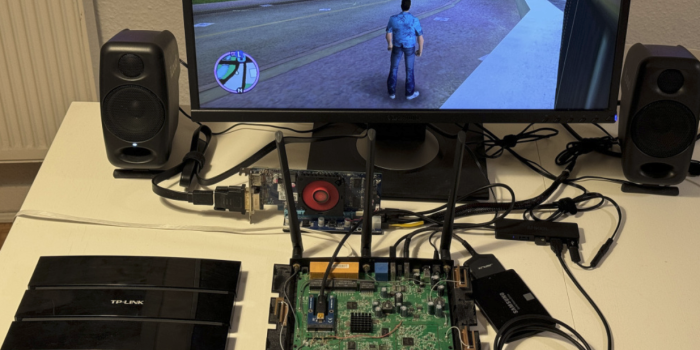Rockstar Games’ release of Grand Theft Auto: Vice City in 2002 marked a significant milestone in gaming history, garnering widespread acclaim across various platforms. The game, originally launched on the PlayStation 2, later found its way onto Windows PCs, smartphones, and modern consoles through the Definitive Trilogy. However, an unconventional group of modders has pushed the boundaries by running the game on a TP-Link router, showcasing the versatility of technology and human ingenuity.
Modders Manawyrm and tSYS embarked on this ambitious project, selecting the TP-Link WDR4900 v1 Wi-Fi router as their primary hardware. This router, equipped with a PowerPC-based CPU, presented a unique opportunity due to its computing capabilities surpassing traditional network devices.

The duo’s primary challenge lay in integrating an external GPU with the router, a feat achieved by soldering a mini PCIe slot onto the mainboard and sourcing a compatible Radeon HD 7470 GPU.
Software customization proved equally demanding, as the router’s firmware lacked the necessary graphics and gaming libraries. Transitioning to a Debian Linux port designed for PowerPC architecture provided a viable solution, albeit with additional adjustments required to enable video output through legacy Radeon drivers.
Despite encountering glitches in character models with initial Vice City versions, the modders persevered, borrowing code from Wii U adaptations and troubleshooting graphical performance issues.
Through persistent tinkering, the modders achieved their goal: a TP-Link router capable of running GTA: Vice City with crisp video output and playable performance. While the exact cause of the final success remains uncertain, the project exemplifies the innovative spirit within the gaming community and the endless possibilities afforded by technology.
In light of this achievement, the modders’ attention turns towards replicating their success with another iconic title: Skyrim. While daunting, their experience with the router modification process and Linux integration provides a solid foundation for tackling new challenges.
With determination and resourcefulness, they aim to expand the boundaries of gaming once again, demonstrating that even the most unlikely devices can become platforms for immersive experiences.


